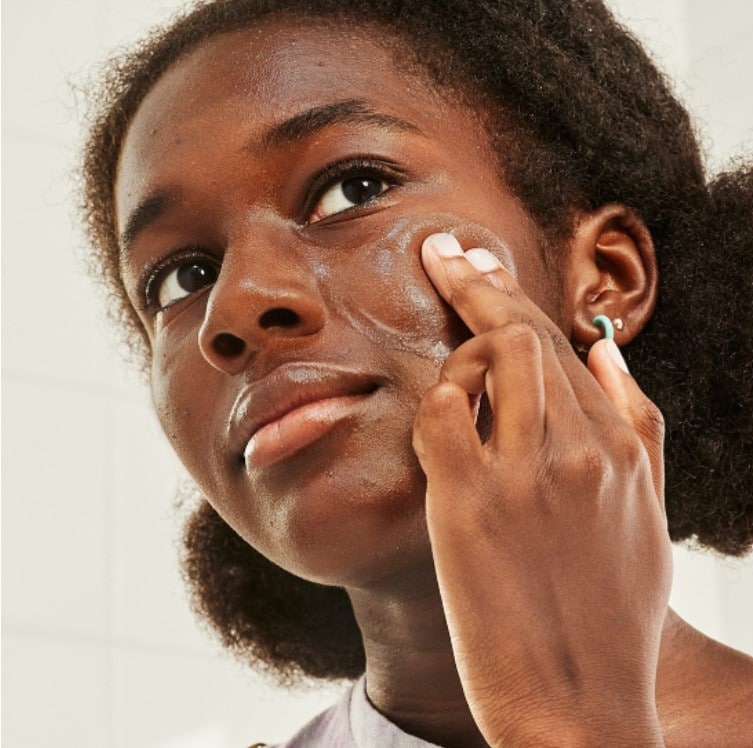
How to Exfoliate Without Damaging Your Skin
![]()
We hear about exfoliation quite a bit as a means of keeping our skin smooth, moisturized, and healthy. After all, how can we get a glowing, healthy-looking complexion if we’re constantly dealing with dead skin cells that pile up?
But knowing that exfoliation is a good idea and knowing how to exfoliate are two entirely different things. Here, we break down exactly what exfoliation is, and how to exfoliate without damaging your skin.
What is exfoliation?
According to Cosmetic Dermatologist Dr. Michele Green, the purpose of exfoliation is to get rid of dead skin cells on the surface of the skin and clear out congested pores to reveal a brighter, smoother complexion.
“Exfoliation plays into the life cycle of skin cells which is about 3 months in children and about 28 days in adults,” she explains. “With age, the dead skin cells that accumulate tend to take longer to shed from the surface of the skin. Dead skin cells build up and clog pores and lead to a dry and dull complexion and rough texture.”
Benefits of exfoliating
The main benefit of exfoliation, according to Dr. Green, is to help speed up cell turnover rate. “Exfoliation also allows serums, treatments, and moisturizers applied afterward to penetrate deeper into the skin and deliver the best benefits,” she explains.
Skin types that are suitable for exfoliation
All skin types are suitable for exfoliation, but you might have to make some tweaks in terms of how you exfoliate based on your skin type. For example, chemical exfoliants, which typically contain beta-hydroxy acids (BHAs) and alpha-hydroxy acids (AHAs) can be great for sensitive or dry skin, according to Dr. Green. AHAs are great for dry skin because they don’t cause irritation, while BHAs are great for oily or acne-prone skin. With normal skin, you should feel comfortable going with a physical or chemical exfoliant.
How to exfoliate without damaging your skin
If you want to exfoliate without damaging your skin, there are a few key components to keep in mind, according to Dr. Green.
“Exfoliating too often or scrubbing too hard can strip the skin’s natural protective barrier and remove the essential oils present that provide hydration and healthy skin,” she explains. “This can lead to redness, inflammation, hyperpigmentation, dryness, infection, or acne breakouts. Stripping the skin of essential moisturizing oils can cause the skin to respond by overproducing sebum, which can then become trapped in the pores and lead to the formation of acne breakouts.”
It’s best to start slowly and gradually increase frequency of exfoliant use if you want to avoid irritated skin. “There is nothing wrong with decreasing the frequency if your skin shows any signs of irritation,” Dr. Green says. “It is highly recommended that you discuss with a board-certified dermatologist to determine which exfoliant and skincare regimen would be best for your specific skin type. If you’re experiencing redness, itchiness, or irritation, avoid using any exfoliants until your skin is healed.”
How to exfoliate the face
Before trying an exfoliating cleanser on the face, Dr. Green recommends applying it to your inner arm first.
“If you are trying a new exfoliating product, perform a patch test on your inner arm before applying to the face to ensure that the product will not cause skin irritation or an allergic reaction,” she says. “To perform a patch test, place a small amount of the product on clean skin and leave the area be for at least 24 hours. If there is no skin irritation after use such as redness, swelling, itching, burning, or rash, then the product should be safe to use on the face.”
Exfoliation on the face should be performed two to three times a week, and always remember to use a moisturizer afterward.
How to exfoliate the body
Since the skin on the body tends to be less sensitive than skin on the face, it’s easier to exfoliate it without damaging the skin, but you should still perform Dr. Green’s patch test before exfoliating your entire body. With a really high-quality body scrub, you can exfoliate your body two to three times a week, and be sure to use a moisturizer afterward.
How to exfoliate the legs
With a body scrub and a brush or sponge, exfoliate your legs by using short, gentle strokes on the skin. Just make sure to avoid any areas that have cuts, as an exfoliating scrub can further irritate those areas and slow down the healing process.
How to exfoliate the feet
Exfoliating the feet is different from exfoliating other parts of the body. You’ll want to soak your feet a few times a week, then use a pumice stone to slough off dead skin cells. Be sure to moisturize afterward, just as you would when exfoliating other parts of the body.
How often should you exfoliate?
You should not exfoliate every day, as doing so can cause dryness or irritation. Two to three times per week is the ideal amount.
Exfoliation is an important part of any skincare routine. With the proper attention, care, and the right products, you can say goodbye to dead skin cells and easily exfoliate your skin without irritating it. Enjoy!
*All referenced results are based on an 8-week U.S. clinical and consumer study.
Learn more about Rodan + Fields and how you can get your most radiant skin ever. Trust your skin’s glow to the Doctors and to your consultant who know how to help you get your skin glowing.
Results may vary depending on multiple factors: age, gender, skin type and condition, concomitant products used, health history, location, lifestyle,
Share this with friends or family members. It will save their skin — and boost their confidence.
PM me for the best options to suit your budget 🙂
*information is taken from The Skincare Source.









